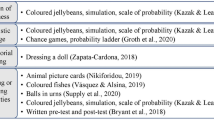Conclusion
Zeilberger has proved some breathtaking theorems [ZB], [Z3], and his W-Z method (joint with Wilf [WZ]) has been a godsend to me [A2] and an inspiration [A3]. However, there is not one scintilla of evidence in his accomplishments to support the coming “... metamorphosis to nonrigorous mathematics.”
Until Zeilberger can provide identities which are (1) discovered by his computer, (2) important to some mathematical work external to pure identity tracking, and (3) too complicated to allow an actual proof using his algorithm, then he has produced exactly no evidence that his Brave New World is on its way.
I regret feeling compelled to write this article. Unfortunately articles on why rigorous mathematics is dead create unintended side effects. We live in an age of rampant “educational reform.” Many proponents of mathematics education reform impugn the importance of proofs, and question whether there are right answers, etc. A wonderfully sane account of these problems has been given by H.-H. Wu [Wu1], [Wu2]. A much more disturbing account “Are proofs in high school geometry obsolete?” concludes Horgan’s article [H]. It is a disservice to mathematics inadvertently to provide unfounded ammunition for the epistemological relativists.
If anyone reading this believes the last paragraph is rubbish because attempts (unknown to me) are currently underway to insert the Continuum Hypothesis or the Theory of Large Cardinals into the NCTM Standards for School Mathematics, please don”t write to tell me about them. I can take only so many shocks to my system.
Finally, wisdom suggests that grand predictions of life in 2193 ought to be treated with scepticism. (“Next Wednesday’s meeting of the Precognition Society has been postponed due to unforeseen circumstances.”) A long-overdue analysis of some of our current prophets has been attempted by Max Dublin [Du]. Especially noteworthy is Dublin’s Chapter 5, “Futurehype in Education. “ I won’t give the plot away, but I recall the words of Claude Rains near the end ofCasablanca: “Round up the usual suspects!”
Similar content being viewed by others
References
A. Jaffe and F. Quinn,“Theoretical mathematics”: Toward a cultural synthesis of mathematics and theoretical physics, Bull. Amer. Math. Soc. (N.S.)29 (1993), 1–13.
S.B. Ekhad,A very short proof of Dixon’s theorem, J. Combin. Theory Ser. A54 (1990), 141–142.
S. B. Ekhad and S. Tre,A purely verification proof of the first Rogers-Ramanujan identity, J. Combin. Theory Ser. A54 (1990), 309–311.
B. Cipra,Theoretical computer scientists develop transparent proof techniques, SIAM News 25 (May 1992).
S. Arora, C. Lund, R. Motwani, M. Sudan, and M. Szegedy,Proof verification and intractability of approximation problems, Proc. 33rd Symp. on Foundations of Computer Science (FOCS), IEEE Computer Science Press, Los Alamos, 1992, pp. 14–23.
S. Arora and M. Safra,Probabilistic checking of proofs, ibid, pp. 2-13.
J. Spencer,Short theorems with long proofs, Amer. Math. Monthly90 (1983), 365–366.
K. Godei,On length of proofs, Ergeb. Math. Colloq. 7 (1936), 23-24, translated inThe Undecidable (M. Davis, Ed.), Raven Press, Hewitt, NY, 1965, pp. 82–83.
J. Dawson,The Gödei incompleteness theorem from a length of proof perspective, Amer. Math. Monthly86 (1979), 740–747.
P. Cartier and D. Foata,Problèmes combinatoires de commutation et réarrangements, Lecture Notes in Math.85, Springer, 1969.
References
G. E. Andrews,Problem 74-12, SIAM Review16 (1974), 390.
G. E. Andrews,Plane partitions V: the T.S.S.C.P.P. conjecture, J. Combin. Theory Ser. A66 (1994), 28–39.
G. E. Andrews,Schur’s theorem, Capparelli’s conjecture and q-trinomial coefficients, Contemp. Math, (in press).
G. E. Andrews, S. B. Ekhad and D. Zeilberger,A short proof of Jacobi’s formula for the number of representations of an integer as a sum of four squares. Amer. Math. Monthly100 (1993), 274–276.
J. M. Borwein, P. B. Borwein and K. Dilcher,Pi, Euler numbers, and asymptotic expansions. Amer. Math. Monthly96 (1989), 681–687.
D. M. Bressoud,Solution to Problem 74-12. SIAM Review23 (1981), 101–104.
J. Dougall,On Vandermonde’s theorem and some more general expansions, Proc. Edinburgh Math. Soc.25 (1907), 114–132.
M. Dublin,Futurehype. The Tyranny of Prophecy, Viking (the Penguin Group), London and New York, 1989.
S. B. Ekhad,A very short proof of Dixon’s theorem, J. Combin. Theory Ser. A54 (1990), 141–142.
S. B. Ekhad and S. Tre,A purely verification proof of the first Rogers-Ramanujan identity, J. Combin. Theory Ser. A54 (1990), 309–311.
I. Gessei,Finding identities with the WZ method, talk presented at the ACSyAM Workshop on Symbolic Computation in Combinatorics at MSI/Cornell University, September 21-24, 1993.
J. Horgan,The death of proof, Scientific American269 (1993), no. 4, 74–103.
E H. Jackson,Summation of q-hypergeometric series, Mess. Math.50 (1921), 101–112.
W. Thurston,Letter to the editor, Scientific American270 (1994), no. 1, 9.
G. N. Watson,A new proof of the Rogers-Ramanujan identities, J. London Math. Soc.4 (1930), 4–9.
H. Wilf,Billions and billions of combinatorial identities, talk presented at Allerton Park in the Conference in Honor of Paul Bateman, April 25-27, 1989.
H. Wilf and D. Zeilberger,Rational functions certify combinatorial identities, J. Amer. Math. Soc.3 (1990), 147–158.
H.-H. Wu,The role of open-ended problems in mathematics education, The Journal of Mathematical Behavior (to appear).
H.-H. Wu,The role of Euclidean geometry in high school, The Journal of Mathematical Behavior (to appear).
D. Zeilberger,The method of creative telescoping, J. Symbolic Computing11 (1991), 195–204.
D. Zeilberger,Theorems for a price: tomorrow’s semi-rigorous mathematical culture, Notices of the A.M.S.40 (1993), 978–981.
D. Zeilberger,The alternating sign matrix conjecture (to appear).
D. Zeilberger and D. Bressoud,A proof of Andrews’ q-Dyson conjecture, Discrete Math.54 (1985), 201–224.
Author information
Authors and Affiliations
Rights and permissions
About this article
Cite this article
Zeilberger, D., Andrews, G.E. Theorems for a price: tomorrow’s semi-rigorous mathematical culture. The Mathematical Intelligencer 16, 11–18 (1994). https://doi.org/10.1007/BF03024696
Published:
Issue Date:
DOI: https://doi.org/10.1007/BF03024696




